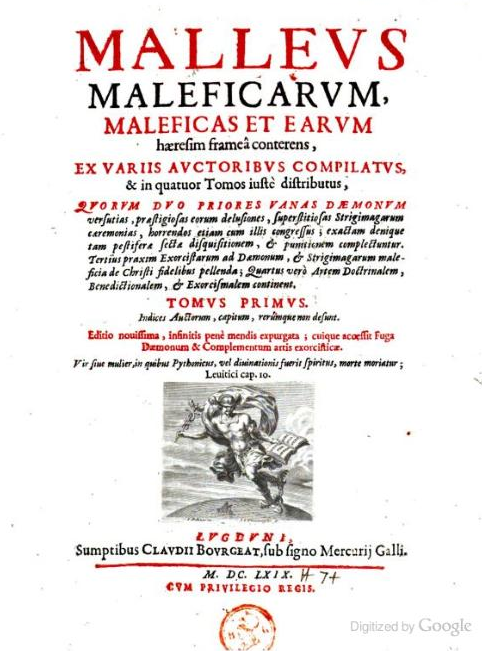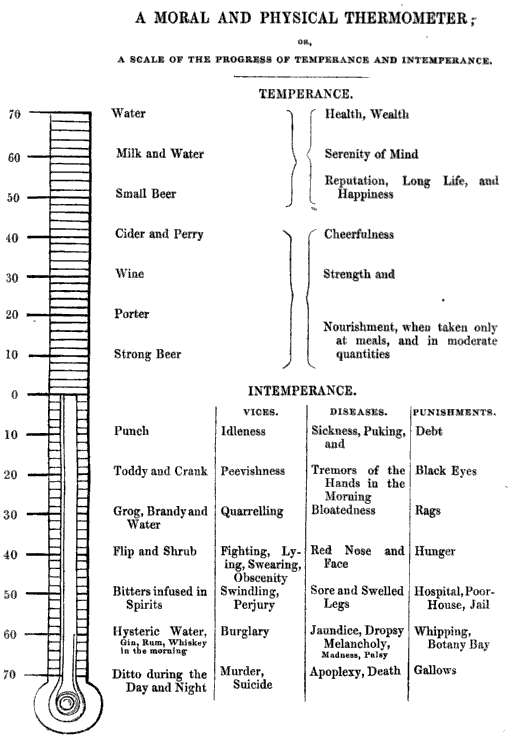Google Books has provided me endless hours of enjoyment. Sure, the collection seems to consist mainly of old, out of copyright books, but that makes it even more enticing. It is like a fine used-book store, without the musty smell.
Imagine. It is late at night, and the library is closed and Amazon cannot deliver fast enough. But you absolutely must have immediate access to Kramer and Sprenger’s witch-hunting manual, the Malleus Maleficarum, specifically the 1669 Lyon edition. What do you do?
A quick search of Google Books, and there you have it, in full text, with the ability to download it in PDF if you want.

What you do with the “Hammer of Witches” is your own business. But who wouldn’t have a little extra bounce in their step knowing they have a copy tucked away on their USB memory stick, “just in case”?
And so, I was browsing through “many a quaint and curious volume of forgotten lore” when I came across a book with the imposing title The Moral Aspects of Medical Life, Consisting of the ‘Akesios’ of K.F.H. Marx, translated from the German with Biographical Notes and Illustrative Remarks by James Mackness, M.D., published in London in 1846. Note that this is by Karl Friedrich Heinrich Marx (1796-1877), the German physician, not to be confused with the founder of modern communism Karl Heinrich Marx (1818-1893).
Within this text is printed a most remarkable diagram, “A Moral and Physical Thermometer”. A footnote ascribes it to another work,’Public Characters’, London, 1801, pg 499.
In any case here it is, a marvelous example of data presentation and visualization from 200 years ago. It shows, in parallel scales, the strength of various drinks as well as their effects.

Now, mind you that this diagram is coming from an advocate of water drinking, but it is an interesting view of the state of drink in 1801 London.
A few things stand out:
Cider (to American readers) is non-alcoholic. Here it apparently refers to hard cider. Perry is like hard cider, only made from pears. Don’t see much of that around here.
Why is wine listed as weaker than porter and great beer? Today porter is 5% ABV or so, while wine is 12% or so. And even strong beers today are 6-7% ABV. So were things so much different back in 1801? Or is the chart correlated with the social stigma attached to the drink, and not necessarily the potency of the drink?
Some of the drinks are obscure today, in particular toddy (any hot, spiced drink, like mulled cider), crank (unknown — not listed in the OED), flip (eggnog-like drinks) and shrub (lemon juice and rum)
Hysteric Water — we may forget that the root word here is from the Greek “hystera”, meaning uterus. It was thought that hysteria was predominately a disorder of women, and was treated by various means, including “Hysteric Water”, which according to one period recipe was brandy infused with medicinal herbs: valerian, pennyroyal, rue, mugwort, savin, orange peel, and lovage. It was taken in small doses: 1 ounce.
So why is Hysteric Water listed as the worst of the lot, the one where drinking it leads one to risk whipping or exile to the Australian penal colony of Botany Bay? Perhaps there was some additional social stigma attached.
One period commenter described the state of affairs like this:
Many a good woman, who would start at the very mention of strong waters, cannot conceive there can be any harm in a cordial. And as the fair sex are more particularly subject to a depression of spirits, it is no wonder that they should convert their apothecaries’ shops into rich cordial warehouses, and take drams by way of physic; as the common people make gin serve for meat, drink, and clothes. The ladies perhaps may not be aware, that every time they have recourse to their Hartshorn or Lavender Drops, to drive away the vapours, they in effect take a dram ; and they may be assured, that their Colic, Surfeit, and plague Waters, are to be ranked among spirituous liquors, as well as the common stuff at the gin-shop. The college of Physicians, in their last review of the London Dispensatory, for this very reason expelled the Strong Water, generally known by the soothing name of Hysteric Water; because it was a lure to the female sex to dram it by authority, and to get tipsy secundum artem.
If any of my fair readers have at all given into this pernicious practice of dram-drinking, I must intreat them to leave it off betimes, before it has taken such hold of them, as they can never shake off. For the desire of drams steals upon them, and grows to be habitual, by imperceptible degrees : as those who are accustomed to take opiates, are obliged to encrease the dose gradually, and at last cannot sleep without it.
But it is comforting to know that then, as today, a moderate beer is still good for “reputation, long life and happiness”.
Haven’t heard much from you recently, Rob – it’s good to know you haven’t given up on An Antic Disposition!
Thanks. I’m still here. Just took a little break to deal with some deferred maintenance in my life.
Why don’t you show us that “Malleus Maleficarum” on Geneva !!!
It would be very fun to use it there (and usefull too).
Good to have you back blogging :)
J
I like how your blog entry was about both spirits (witches) and spirits (alcohol) :-)
> Why is wine listed as weaker than porter and great beer?
The chart doesn’t say that porter is stronger than wine, just that drinking it is more dangerous. Generally wine is diluted with water and taken at meals, and enjoyed for its wide variety of types, flavors, and vintages. Porter is consumed by persons perhaps a bit more interested in intoxication than the wine drinkers.
> So why is Hysteric Water listed as the worst of the lot?
The chart and accompanying article are presented by a practicing clinical physician with, apparently, many lady patients. He is cautioning not against drinking in general, but against that particularly pernicious habit of imbibing alcohol and opiates as medicine, and thereby becoming addicted. In this context, Hysteric Water, Lydia Pinkham’s, and similar products are far more dangerous than rotgut rye whisky, which any lady would know enough not to touch.
-Wang-Lo.
Rob, that’s really an american view of a strong beer :-).
Belgian Trappists are in the 8 to 10% range and the Bush beer is at 12%.
When the book was written, breweries were operating like the Trappist small breweries of today, who have kept the traditional way of brewing. Beer, in general, was much stronger then.
I think the odd thing was more that wine was listed as lower on the scale than porter or strong beer. Today wines are generally around 11-12% ABV for dinner wines, higher for dessert wines. Hard to get higher than that with beer, unless you go for an oddity like Samichlaus (14%) or Sam Adams Utopias (25%).
The explanation that makes the most sense to me is that this isn’t a rating by alcohol level, but by social respectability prevalence of abuse. Wine was more respectable and less abused than beer.
Found a recipe for crank.
http://www.artofdrink.com/2008/08/six-penny-crank.php